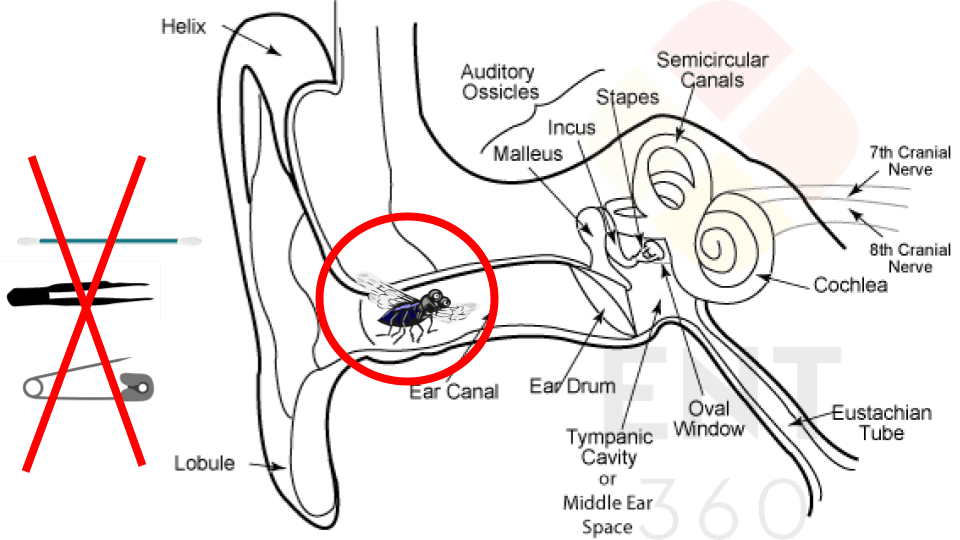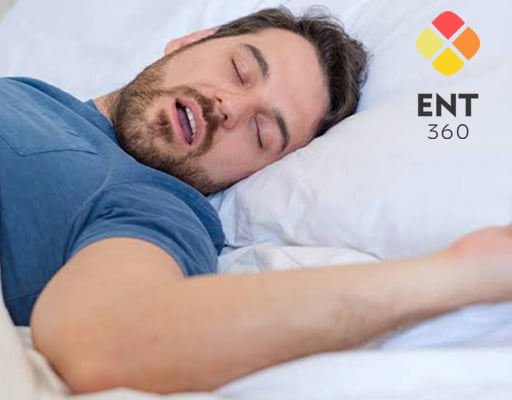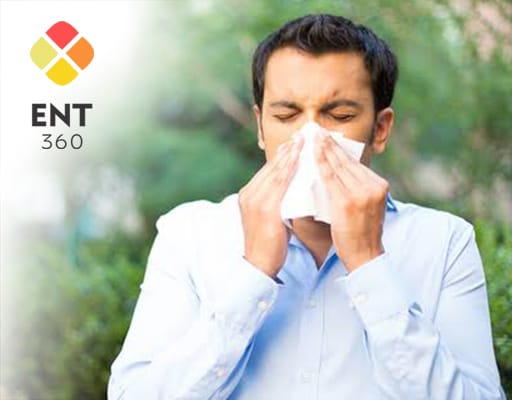
An insect buzzing in your ear can be a startling experience. While the initial reaction might be panic, staying calm is crucial. Remember, you’re in control. Following some basic first-aid steps can help remove the unwanted visitor safely. Here’s what you should do if you or someone you know finds themselves in this situation:
The Gentle Approach: Tilting and Shaking
- Tilt Your Head: The first step is to tilt your head to the side affected by the insect. If it’s in your left ear, tilt your head so your left ear faces the ceiling. This positioning encourages the insect to crawl or fly out naturally due to gravity.
- Gently Shake: Once your head is tilted, gently shake it back and forth. This motion, combined with the change in gravity from the head tilt, can dislodge the insect and allow it to dislodge itself. The additional vibration from hopping on one foot can further encourage the insect to move.
Important Reminders:
- Avoid Forceful Measures: Never stick anything sharp or pointed, like cotton swabs, tweezers, or hairpins, into your ear canal; these can damage the delicate eardrum and worsen the situation.
- Keep Calm: Loud noises or frantic movements can further agitate the insect and burrow deeper.
Luring the Insect in the Ear Out: Oil and Warm Water
If the gentle approach doesn’t work and the insect seems alive, you can use safe oils, such as mineral oil, baby oil, or olive oil, to coax it out.
- Oil Selection: Choose a safe, non-irritating oil like mineral oil, baby oil, or olive oil. Avoid using alcohol-based solutions or essential oils, as these can irritate the ear canal and potentially cause more harm than good.
- Warm the Oil: Warm a small amount of the preferred oil to body temperature. Do not overheat the oil, as it may cause burns in the ear.
- Apply the Oil: Tilt your head, keeping the affected side facing upwards. Using a clean dropper, carefully place a few drops of the warmed oil onto the wall of the ear canal.
- Wait and Watch: Stay still for a few minutes, allowing the oil to seep into the ear canal. The oil’s properties, such as its viscosity and surface tension, might cause the insect to float to the surface.
- Flush with Clean Warm Water (Optional): If the insect surfaces, try flushing it out with warm water. Use a bulb syringe (available at most pharmacies) filled with warm water and gently squirt the water into the ear canal. Be careful not to use excessive force, which can push the insect further into the ear or damage the ear canal.
Seeking Medical Help for Insect in the ear: When to see an ENT Doctor
If the above steps fail to remove the insect, or if you experience any of the following symptoms, seek medical attention immediately:
- Severe pain in the ear
- Difficulty hearing
- Ringing in the ear (tinnitus)
- Discharge or bleeding from the ear
- Signs of infection and inflammation like redness, swelling, or fever
Preventing Insects in the Ear
While unexpected encounters with insects are possible, here are some ways to minimize the risk:
- Keep Your Ears Covered: When outdoors, especially in areas with high insect activity, consider wearing a hat with ear flaps or earplugs.
- Shake Out Sleeping Bags: Before using a sleeping bag outdoors, hold it by the top and shake it vigorously from side to side. Shaking will help dislodge any potential insect inhabitants that may have crawled inside.
- Keep Food Covered: Cover food and drinks to avoid attracting insects outdoors. Insects are often attracted to the smell of food, and leaving it uncovered can increase the risk of insects getting into your ears.
In Conclusion
An insect in the ear can be a disturbing experience. However, by staying calm and following these basic first-aid steps, you can often remove the insect safely at home. Remember, if the situation worsens or you experience any concerning symptoms, don’t hesitate to seek medical attention from an ENT doctor.
This article was edited by Dr Akanksha Saxena, Consultant ENT, Head & Neck Surgeon, ENT360, DLF Phase 1 and Sector 52, Gurgaon. She is an ENT Specialist in Gurgaon with over 14 years of experience. Read more of her blogs here.


